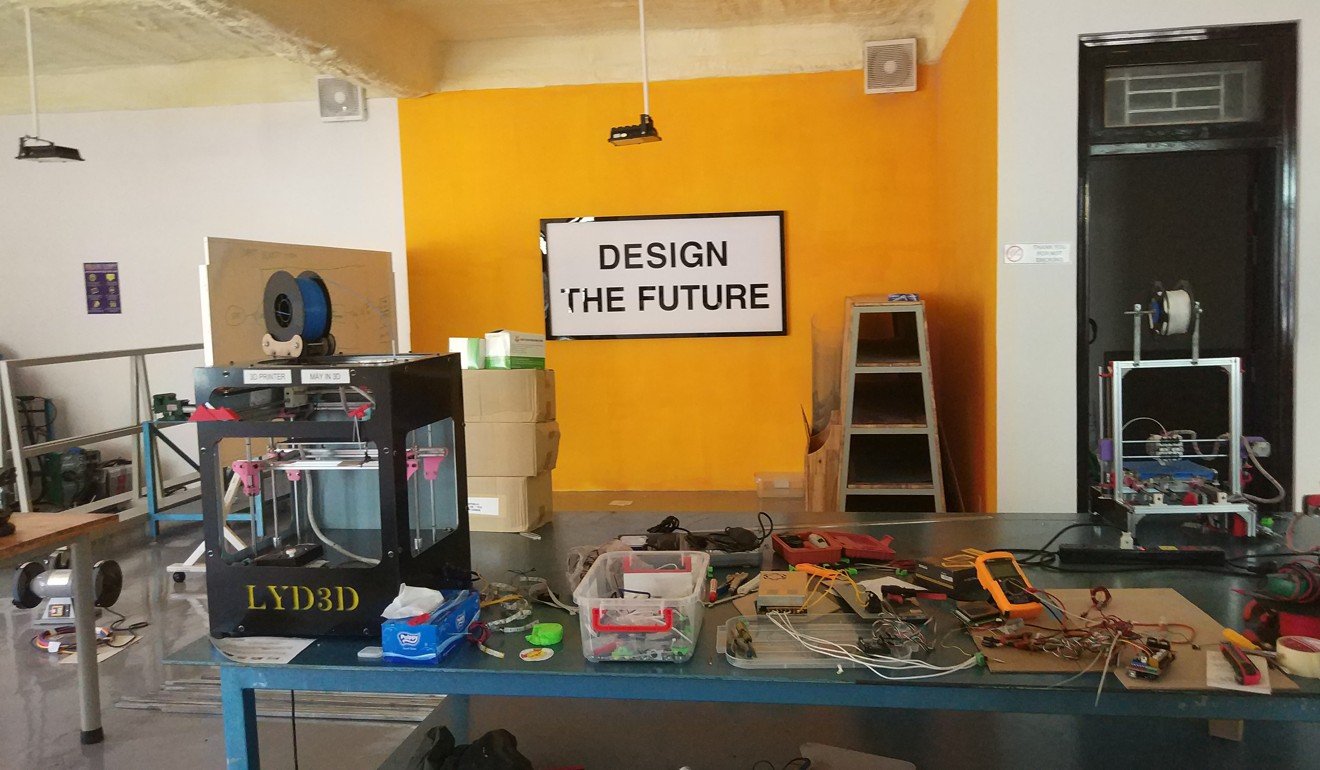
Forget ‘Made in China’. Say hello to ‘Made in Vietnam’
Nguyen Ba Hoi produces neither smartphones nor steel for export. Instead, he’s focusing on developing his country into a centre for innovation
Forget “Made in China”. There’s a new global buzzphrase: “Made in Vietnam”.
Indeed, the once war-torn nation is fast-positioning itself as a key manufacturing hub. One in 10 smartphones in the world – you may be reading this article from one – are produced in Vietnam.
In 2017, Samsung products alone accounted for a quarter of the country’s US$227 billion in exports, in which steel and furniture also strongly feature.
But the Vietnamese are also adding value in a surprising way, and this is especially apparent in Da Nang.
Nguyen Ba Hoi produces neither smartphones nor steel for export. Instead, he’s focusing on developing his country into a centre for innovation.

He’s spending his time in Danang’s modern and sleek “Maker Spaces”, co-ops where creatives can invent and test out new products, that are quickly popping up all over the region.
“University students come here to learn about thermal equations or build a musical instrument in two hours. We’re also developing a device to help patients who have suffered a stroke – for now, it’s just a prototype.”
Can Vietnam take Singapore’s stock market crown?
Married and a father of two, Hoi shows me around the Maker Innovation Space on the University of Danang’s campus, one of two facilities he has established since 2015. It’s filled with 3D printers, laser cutters and all sorts of modern gadgets tech junkies relish.
But he hasn’t always had it easy.
“Both my parents were primary schoolteachers and part-time farmers. They raised livestock like pigs … their income was super low.”
Hoi was born in the rural village of Binh Lan Ward in Vietnam’s central Quang Nam province, with a population of more than 1.4 million. The place seems humble even today; one-lane roads and single-storey shophouses surrounded by hills overlooking unending swathes of forests.

“I was born in a very poor area … I came here to Da Nang to study and worked really hard, so I could support my parents. I weighed 38kg and slept four hours a day to learn English … I wanted to go overseas to further my studies.”
After obtaining a degree in electrical and electronic engineering at the University of Da Nang, Hoi attended Thailand’s Asian Institute of Technology where he pursued a master’s in microelectronics. He then moved to Munich, where he helped develop a black box system for Mercedes-Benz.
Now an alumnus of Washington’s Catholic University of America with a PhD in biomedical engineering, the ambitious 39-year-old is happy to be back home.
13 Southeast Asian tech firms to watch
“When I hear about the latest technology, it’s always someone from Germany or the UK who’s invented it. So why not someone from Vietnam this time? This is what places like Maker Space can do: give Vietnam’s young people a chance to make a name for themselves.”
Vietnam’s third-largest city of just over 1 million people, Da Nang is poised to play host to more entrepreneurial and technology-centric initiatives like Hoi’s, pushing to develop technology and innovation sectors domestically.
The country’s largest information technology company, FPT Corporation, is looking to transform the coastal metropolis into a “smart city” by 2020, investing US$658,000 on pilot projects such as real-time management of traffic signals and an electronic patient recording system in hospitals.
Innovation even permeates city management. As part of its push to become a “green city” by 2025, Da Nang has already eliminated 12,000 tonnes of carbon emissions by introducing hybrid cars and solar-powered water heaters.

Yet, with only 9 per cent of the workforce holding university-level qualifications, Vietnam may face a barrier to expanding its industrial capability beyond manufacturing.
But Hoi remains optimistic.
Sitting with his parents – who are now happily retired from farming – he quips, “I love this philosophy we have at Maker Space: when you come here, you can innovate and fail very fast. But then you try again and then you succeed. Before we succeed, we must fail a lot.”
On the wall of Maker Space is a sign that simply reads: “design the future”.
If Vietnam can upskill its workforce, cut red tape and create more Hoi’s – Vietnam’s future will no doubt be an inspiring and impactful one for both its people and the rest of the region.

